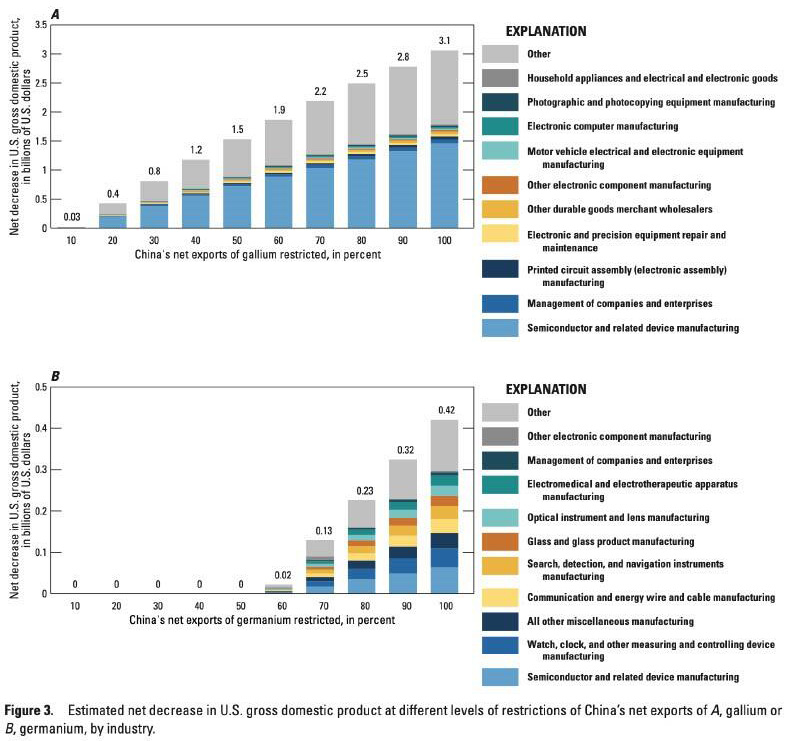News: Suppliers
21 November 2024
US Geological Survey reckons China ban on gallium and germanium exports could cost $3.4bn in US GDP
US Geological Survey (USGS) researchers have developed a new model to assess how disruptions of critical mineral supplies may affect the US economy. Using the model, the researchers estimate that there could be a $3.4bn decrease in US gross domestic product (GDP) if China implements a total ban on exports of gallium and germanium.
Export bans are a risk, given that China imposed export licensing controls on mineral commodities containing gallium and germanium in 2023, requiring state approval for all exports and establishing a pathway to progressive export restrictions, says the USGS. China is the leading producer and exporter of both minerals and the 2022 List of Critical Minerals showed that gallium had the highest supply risk of the minerals analyzed. The new research paper ‘Quantifying Potential Effects of China’s Gallium and Germanium Export Restrictions’ by Nedal Nassar and USGS colleagues estimates the impact of varying levels of Chinese export restrictions for either or both minerals on US GDP.
Economic losses to the US from decreased gallium and germanium imports would be concentrated in the semiconductor device manufacturing industry, which would account for more than 40% of the net loss. Additional losses would be spread across multiple industries including downstream producers dependent on semiconductors. Based on the results of the new model, gallium prices could rise by more than 150% and germanium prices by 26% in the case of a total ban, but the decreased economic activity would be primarily driven by reduction in supplies.

Picture: Estimated net decrease in US GDP at different levels of restrictions of China's net exports of A, gallium or B, germanium, by industry.
“Losing access to critical minerals that make up a fraction of the value of products like semiconductors and LEDs can add up to billions of dollars in losses across the economy,” notes lead author Nedal Nassar. “The USGS has the expertise and the responsibility to help assure access to minerals and supply chain resilience.”
Another major driver of the impacts is the lack of significant production outside of China. “We do account for currently available production capacity outside of China and the short-term substitution potential,” says Nassar. “Our model projects the impacts in the near term, and in many cases developing new supply sources or substitute materials takes far longer.”
The estimates also help policymakers and industry to make informed decisions on:
- maintaining or expanding stockpiles of gallium, germanium and other mineral commodities;
- investing in new plants to recover gallium and germanium from active and legacy mine waste; and
- investing in post-consumer recycling of e-waste to recover gallium and germanium from discarded products.
Through modeling studies like this one, the USGS says it is supporting supply chain resilience. The USGS provides scientific expertise and technical advice to numerous US government organizations, including the intelligence agencies, the National Defense Stockpile, the Federal Reserve Board, the US International Development Finance Corporation and the US Departments of Commerce, Defense, Energy, Homeland Security and State.
In addition to identifying mineral supply risks and projecting the impact of supply chain disruptions, the USGS, through its Mineral Resources Program, is the Federal government’s primary provider of scientific information and research on mineral potential, production, consumption and interaction with the environment. This work includes developing the whole-of-government List of Critical Minerals, assessing the USA’s mineral resource potential and, through the Earth Mapping Resources Initiative (Earth MRI), partnering with state geological surveys to modernize the USA’s data and mapping of mineral resources.
US Department of Energy releases 2023 Critical Materials Assessment









